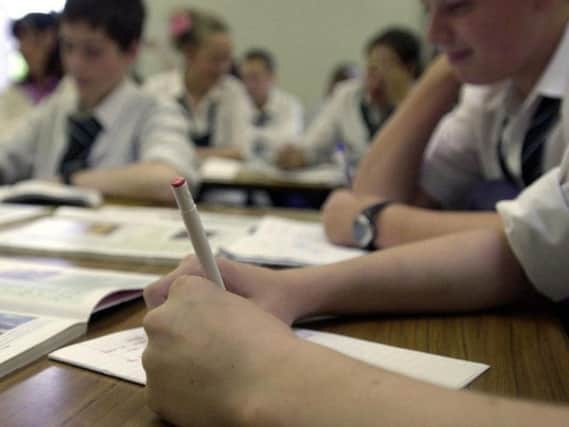Hike in exclusions from borough's schools


A study conducted by the Department for Education has revealed that the number of exclusions, which includes temporary suspensions, is growing year on year.
Other news: Motorbike rider seriously hurt in crash at busy junctionThe revelation comes after a warning from MPs that the education system is like the “wild west” with parents and children taking the brunt of a “scandal of ever-increasing exclusions”.
Advertisement
Hide AdAdvertisement
Hide AdIn the 2016-17 academic year, schools in the Wigan borough handed out 1,880 exclusions, according to the Government data.
Each excluded pupil received an average of two exclusions over the school year and lost around four days of teaching apiece.
The number of exclusions represents an increase of seven per cent from the previous year when 1,754 exclusions were recorded and an increase of 13 per cent from the level it was at five years ago.
James Winterbottom, director of children’s services at Wigan Council said: “Ensuring our children receive quality education is a key priority for us and we support our schools to deliver this. “The increase in fixed term exclusions in Wigan borough reflects a national trend and is one that local authorities are aware of.
Advertisement
Hide AdAdvertisement
Hide Ad“The 13 per cent increase in Wigan borough refers to stats from five years ago and is not representative as the education landscape has changed significantly in that time; most notably with the creation of academies who may have changed their policies.
“The year on year exclusion increase in Wigan borough is actually 126 in 2016-17, which represents a seven per cent rise from 2015-16.
“This could be due to a range of factors including; changes to the national curriculum, schools coming under further financial pressure from central government, a rise in school population and also a change in school performance measures to name a few.
“The reasons for needing to exclude a pupil can be complex and it is a sanction that is always used as a last resort.
Advertisement
Hide AdAdvertisement
Hide Ad“We are encouraging our schools to continue to be as inclusive as possible and we will work with them to intervene as early as possible with the right support to prevent this measure being taken.”
Although the school population has been increasing at the same time, the rate at which exclusions have increased is higher than the rate of population growth.
This means exclusions are now more prevalent relative to the number of school children than they were a year ago, increasing from 3.8 exclusions per 100 pupils to 4.1.
The majority of the exclusions in 2016-17 - 1,484 of them - were in secondary schools, with 348 in primary schools and 48 in special schools, which cater for pupils with special education needs or disabilities.
Advertisement
Hide AdAdvertisement
Hide AdThis equated to a rate of 8 exclusions per 100 pupils in the area’s secondary schools.
Disruptive behaviour is the most common reason for a child to be excluded from Wigan schools, amounting to 32 per cent of exclusions.
A Department for Education spokesman said: “Schools should only use permanent exclusions as a last resort but we do support teachers in taking proportionate and measured steps to ensure good behaviour in schools.
"While we know there has been an increase in exclusions there are still fewer than the peak 10 years ago.
Advertisement
Hide AdAdvertisement
Hide Ad"We recognise some groups of pupils are more likely to be excluded than others which is why we launched an externally-led review to look at how schools are using exclusions and why certain groups are disproportionately affected.”